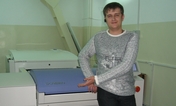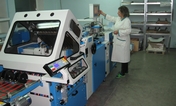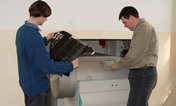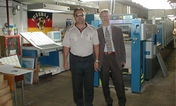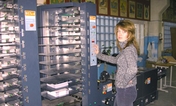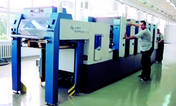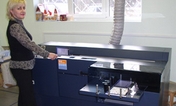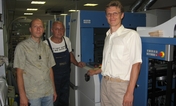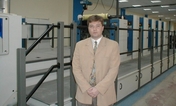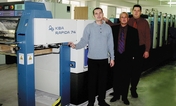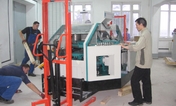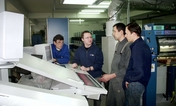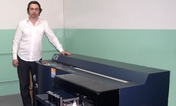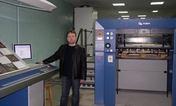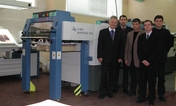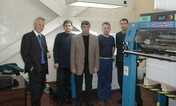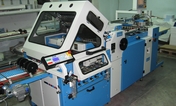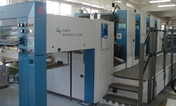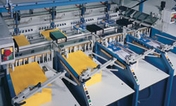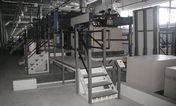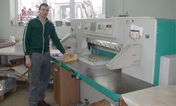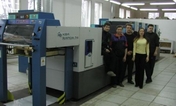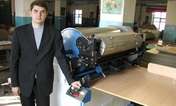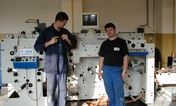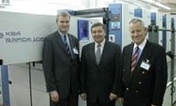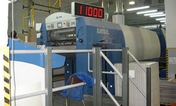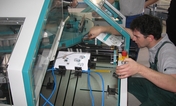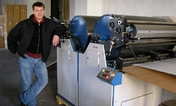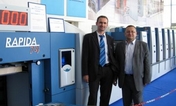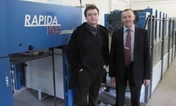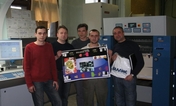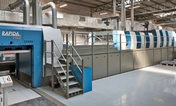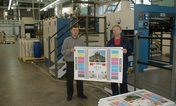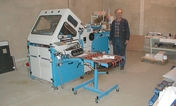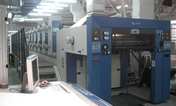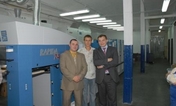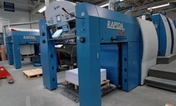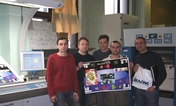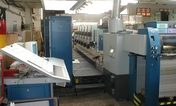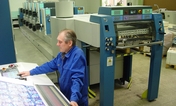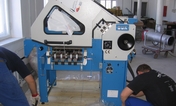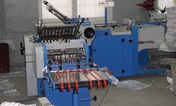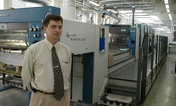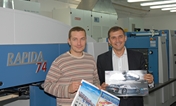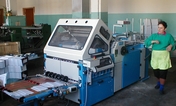When asked about the benefits he has gained with the Rapida RDC 106, ScanMould managing director Martin Fundal gives an amazingly simple answer: “It is by far the most effective die-cutter on the market.” ScanMould has operated a Rapida RDC 106 rotary die-cutter for the processing of inmould labels at its production centre in Jyllinge/Denmark since the middle of the year. Founded just two years ago, the company is one of the early adopters of rotary die-cutting on the basis of Rapida sheetfed offset technology.
The Rapida RDC 106 was installed in a configuration with a single die-cutting unit and accessories for the processing of labels and inmould films. Important features include the sidelay-free infeed system DriveTronic SIS, an AirTronic delivery, a compressor cabinet and various details to safeguard scratch-free sheet travel. Both reels and individual sheets can be handled: An RS 106 reel sheeter incorporating the newly developed “Register-Cut” system cuts reels from a flexo press into sheets of the required length ahead of the feeder. Subsequently, the sheets are fed to the rotary die-cutter in absolutely precise register. Video systems at the feeder and in the delivery permit close observation of the passing sheets.
Nine times more effective than classic flat-bed die-cutters
ScanMould estimates that the Rapida RDC 106 is nine times more effective in production compared to a classic flat-bed die-cutter. This can be attributed both to the higher processing speed of up to 12,500 sheets per hour (for other applications up to 15,000 sheets per hour) and to the faster makeready. Makeready on the Rapida RDC 106 is approximately three to four times faster than on a conventional die-cutter. Furthermore, the necessary dies and cutting formes are significantly less expensive than those of a traditional system.
For ScanMould, it is a major advantage that reels printed on a large flexo press can be sent to the RDC 106 without further intermediate steps thanks to the reel sheeter. Comments from his extensive network of contacts in the print industry drew Martin Fundal’s attention to the option of rotary die-cutting with the Rapida RDC 106.
Fast job changeovers
Already after the first months of production, the expectations placed on the Rapida RDC 106 at ScanMould have been fulfilled. A complete job changeover (die and forme change) takes five to ten minutes. The machine is thus suitable for both high-volume production and short runs. The high die-cutting speed is effective for long runs, and the fast job changeovers ensure that shorter runs are also economical. This flexibility is a particular merit of the Rapida RDC 106. But Martin Fundal sees another key benefit: “The register accuracy in die-cutting is absolutely perfect.” He is convinced that the Rapida RDC 106 could be used equally successfully in folding carton production, in addition to inmould labels.
At ScanMould, however, production has from the very beginning been focussed on the printing and die-cutting of inmould labels. The company was founded with the support of the Danish Growth Fund, a state initiative which provides capital and expertise to assist new companies. Martin Fundal is at the same time a co-proprietor of ScanKet, another Danish company with over 30 years of experience in the production of conventional labels.

